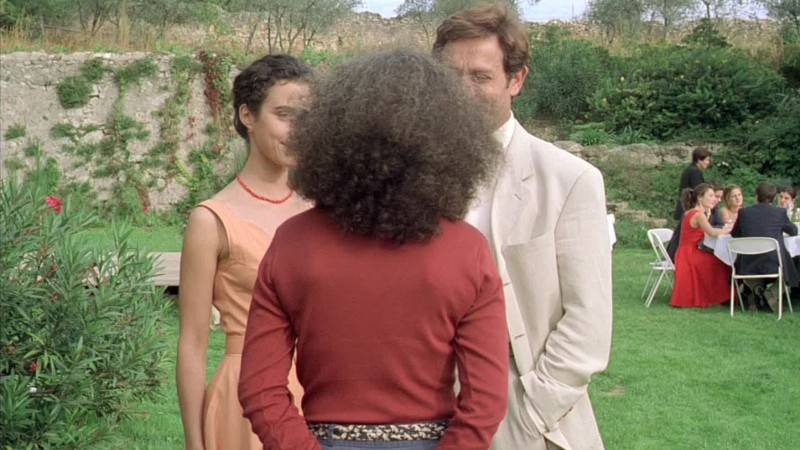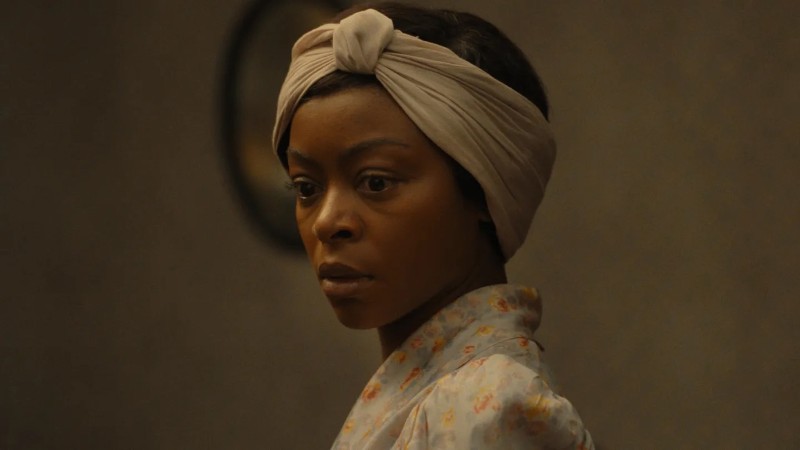The Artifice and the Real

Opening the New York Film Festival tonight, May December stars Natalie Portman as an actress disrupting the life of the woman (Julianne Moore) she intends to play in a movie. Director Todd Haynes “is doing something extraordinarily delicate and difficult in May December,” writes Reverse Shot coeditor Michael Koresky, “reminding viewers—with the lightest of touches—that we’re all implicated and indulgent in the processes of social, cultural, and sexual exploitation that define the modern consciousness.”
- Prompted by the Hal Hartley retrospective on the Criterion Channel, Ray Pride has posted three interviews, starting with one for a 1997 issue of Filmmaker. “You should never forget that a lot of people don’t think that movies are made by people,” said Hartley, years before screenwriters would have to go on strike to ensure that movies would carry on being made by people. “A certain kind of moviegoer resents being reminded, resents feeling the artifice, which I can’t even apologize for.” In 2005, Hartley discussed the shift to digital, and in 2018, Pride got him talking about influences such as Bresson, Alan Rudolph, and Peter Brook’s Marat/Sade (1967). “I want the viewer to know what the actors are doing,” Hartley said. “There’s a reason why they’re taking this pause, why they’re moving this way. It’s that simple.”
- For Metrograph Journal, Annabel Brady-Brown brings Pedro Costa and Wang Bing together for a brief but dense conversation. “Every time I see one of Wang Bing’s films, I feel that I should probably have more confidence, or I should trust a little more some things that I don’t trust,” says Costa. “I’ve always said that reality helps him a lot, and reality bothers me a lot, it creates obstacles and difficulties that I have to solve and jump over.” When “Pedro talks about his need to sort of cinematize reality, to me, that is something that flows naturally from his film education, his film background,” says Wang. “Whereas my film background, what conditioned me, there’s no similar tradition in China . . . [I]t’s almost as if when Pedro Costa makes a film, he is starting from the North Pole and I am starting from the South Pole.”
- A series of films by Rita Azevedo Gomes is running through October 14 at Harvard Film Archive, and Tone Glow editor Joshua Minsoo Kim has posted an interview he conducted just before The Kegelstatt Trio, her adaptation of the 1987 play by Eric Rohmer, premiered in Berlin last year. They discuss her love of language and music and her dislike of labels such as “women’s films.” A curator at the Cinemateca Portuguesa, Azevedo Gomes jokes about proposing “a huge cycle” of “men’s films.” She also looks back on the time Jean-Marie Straub (“When he’s severe with you, he’s not trying to smash you”) and Danièle Huillet gave her cinematographer William Lubtchansky’s phone number, and “it was a very, very important conversation I had. Half an hour with the coins in a telephone booth in Paris. Putting coins in, dropping coins, I was afraid the coins would run out.”
- “I know that I am not alone as a neurodiverse person in feeling both represented and soothed by [Wes] Anderson’s cinema,” writes Sophie Monks Kaufman at Little White Lies. For a two-part deep dive into this body of work, “an arena where having inappropriate feelings is the norm,” Kaufman talks with psychologists, neurodivergent friends, Jason Schwartzman, and Anderson himself, who tells her that “people who identify as neurodivergent often have particular focus in their perception of things, a different way of processing information. I like the idea that there’s an audience who is, in a way, paying extra special attention and seeing the movie differently. Possibly seeing the movie more the way I see it, as a filmmaker.”
- Krzysztof Kieślowski’s Three Colors trilogy “was made at the very start of a period in European history whose end we are now witnessing,” writes Adam Kirsch in the New York Review of Books: “the thirty years’ peace of post–cold war Europe, the era of the ‘end of history.’ From the vantage point of 2023, Kieślowski's trilogy looks like one of the defining artworks of this period, in which some of its central conflicts are darkly anticipated.” Kieślowski’s “understanding of the inadequacies of secular liberalism seems prophetic today, when nationalists and populists have gained power across Europe by promising an antidote to neoliberal rootlessness. In addition to all its formal beauties, Three Colors offers a beautiful reminder that artists often intuit more about the direction of history than the statesmen and experts who claim to be steering it.”



